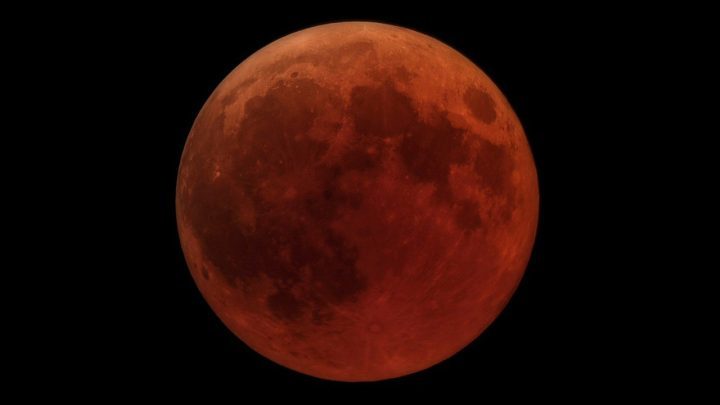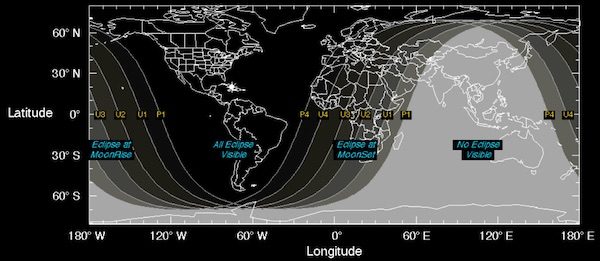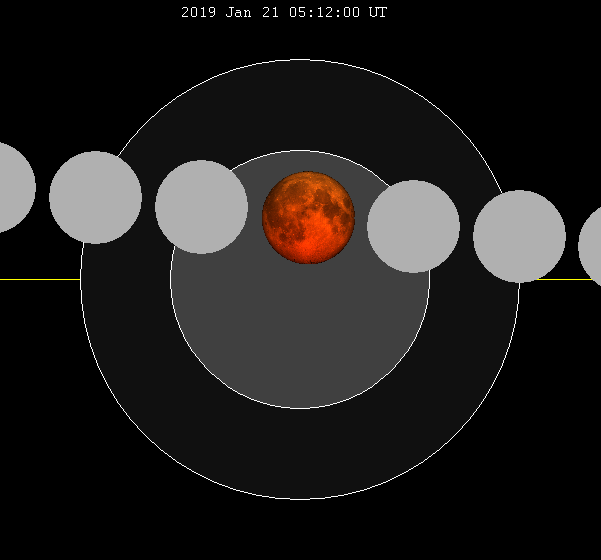
It will also be one of the few times when you'll be able to photograph the moon and stars simultaneously. While it will be a deep blood red, the contrast difference will be low enough that cameras will be able to pick up stars in the background.
Unlike a solar eclipse, which can be viewed only from a certain relatively small area of the world, a lunar eclipse may be viewed from anywhere on the night side of Earth. A total lunar eclipse lasts a few hours (this one will be about 5.5 hours long), whereas a total solar eclipse lasts only a few minutes as viewed from any given place, due to the smaller size of the Moon's shadow. Also unlike solar eclipses, lunar eclipses are safe to view without any eye protection or special precautions, as they are dimmer than the full Moon.
Total lunar eclipse: A total lunar eclipse occurs when the moon and the sun are on exact opposite sides of Earth, according to NASA. When this happens, Earth blocks the sunlight that normally reaches the moon. Instead of that sunlight hitting the moon's surface, Earth's shadow falls on it. Starting at 9:36 p.m. EST Jan. 20. At 10:34 p.m., it moves into a partial eclipse, and starting at 11:41 p.m., the full eclipse begins; a maximum eclipse occurs at 12:12 a.m. Jan. 21. The total eclipse ends at 12:44 a.m.
Supermoon: A supermoon occurs when the full moon is at the closest point of its orbit to the Earth (perigee). That makes the moon look extra-close and extra bright - up to 14% bigger and 30% brighter than a full moon at its farthest point from Earth, known as the apogee, NASA said. This is the first of three supermoons in 2019. The others will be on Feb. 19 and March 21. Of these, the Feb. 19 full moon will be the closest and largest full supermoon of 2019.
"Blood" moon: That is just the reddish color the moon will appear during the total lunar eclipse.





Reader Comments